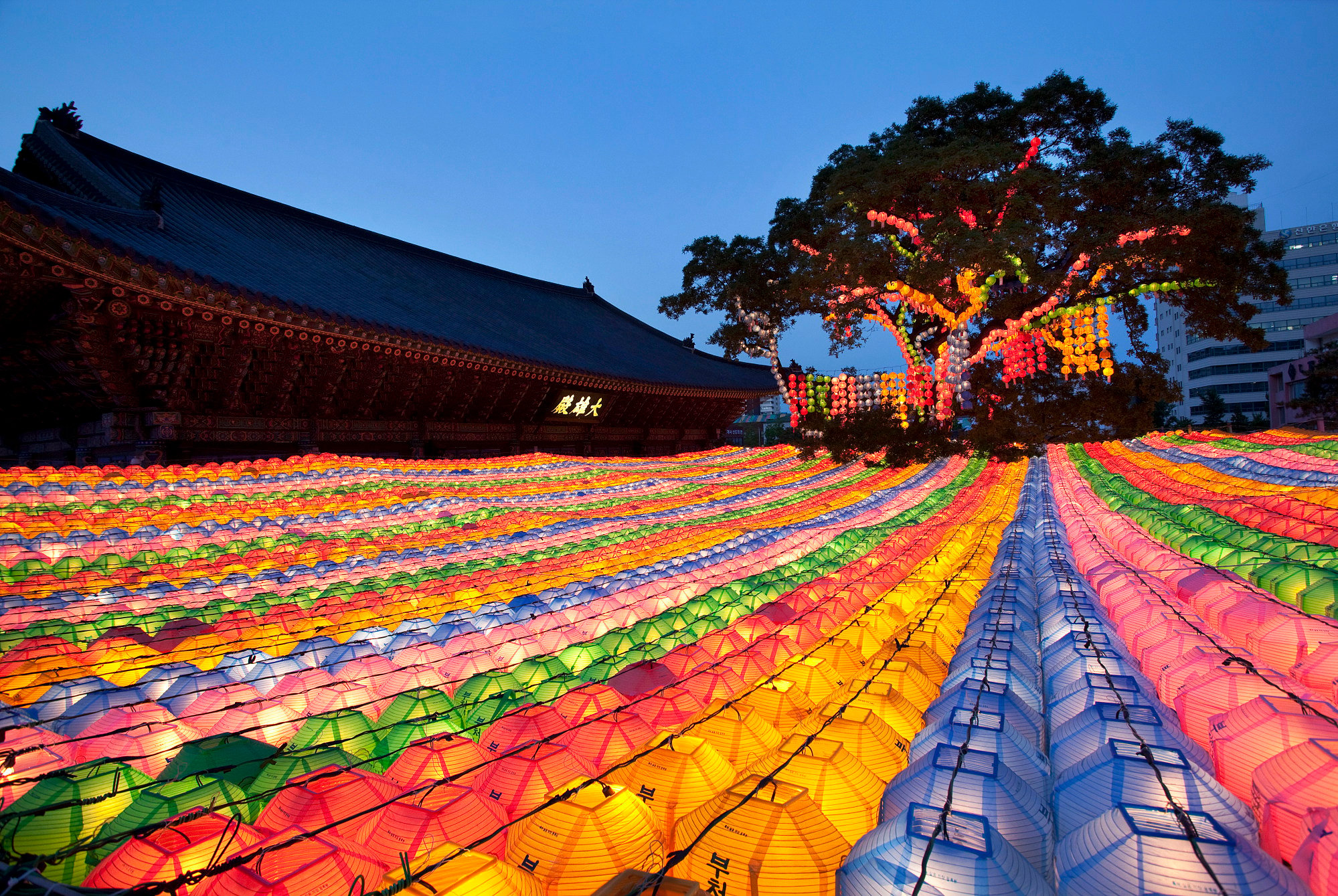
One of South Korea’s most important Buddhist temples, Jogyesa is an oasis of peace and tranquillity in bustling Seoul
- The colourful Jogyesa temple in the Jongno-gu district of South Korea’s capital is one of the most significant Buddhist landmarks in the country
- Activities available to visitors include a ‘temple stay’ experience, drinking tea with a Buddhist monk, and a temple food lesson
Shopping and sightseeing can be exhausting. Fortunately for visitors to central Seoul, respite and tranquillity can be found at an important Buddhist temple in the Jongno-gu district of the South Korean capital, on the northern side of the Han River.
The Jogyesa temple stands among palaces from the Joseon era (1392-1897), Korea’s last dynastic kingdom, and traditional hanok houses.
Established in 1910, Jogyesa was the first Buddhist temple to be built within the fortress walls of Seoul – a milestone for Buddhism, which had been persecuted for five centuries by Confucian Joseon kings. Buddhist monks had not even been allowed to enter the fortress for nearly 300 years before 1895.
Attitudes towards Buddhism softened in the late 19th century as the Japanese influence on the country grew, and 1910 was the year Japan annexed Korea, becoming the colonial power.

The temple has had several names: it was called Kakhwangsa for its first 28 years, and then Taegosa until 1954.
The main temple hall (daeungjeon) is a colourful wooden structure that was built in the 1920s according to Joseon architectural principles, which include, for example, exuberantly decorative gongpo, intricately layered supports between the walls and the roof.
A huge tree thought to be around 500 years old stands outside the hall and is decorated with lanterns during major festivals, such as the Buddha’s Birthday.
An octagonal 10-storied pagoda next to the main temple houses what is thought to be Buddha’s “sarira” – the pearl- or crystal-like objects that are purportedly found among the cremated ashes of a dead monk’s body. According to Joseon Bulgyo Tongsa, a 19th-century book that records Korea’s Buddhist history, the sarira was a gift from a Sri Lankan Buddhist who visited in 1913.
Jogyesa is one of the country’s most significant temples and serves as the headquarters for the largest Buddhist order in South Korea, Jogye.

Open to visitors 24 hours a day, the temple is a stone’s throw from the Gyeongbok Palace, which was established in 1395 and is considered the most symbolic royal architecture of the Joseon dynasty; Gwanghwamun Square, which is lined with governmental buildings and foreign embassies; and the traditionally cultural Insa-dong neighbourhood.
Regardless of what time it is, Buddhists will be at Jogyesa offering prayers, the more devout bowing 108 times to the large Buddha statue.
Surrounded by office buildings, the temple offers guided meditation sessions during lunch hours that are popular with white-collar workers, who are a common sight at the temple grounds as they stroll through clutching takeaway coffees.

Across the road from the temple is the Templestay Information Centre, also operated by the Jogye order, where visitors can acquire information on, and book stays for, temples not only in Seoul, but also across South Korea.
Activities available to visitors to Jogyesa and the Templestay Information Centre include:
A short ‘temple stay’ experience
This includes a guided tour of the temple and a night in modest, Korean-style accommodation, where guests sleep on thick bedding on the floor. This immersion in the humble and peaceful lives, customs and ideas – including meditation and mindful eating – of a Buddhist monk costs 60,000 won (US$47) per night.

Drinking tea with a Korean Buddhist monk
At the information centre, visitors are offered the opportunity to chat, in groups of four or less, with a sunim (monk) over a cup of tea for an hour.
Buddhist wisdom has been popularised in South Korea as an antidote to modern woes, and many monks have become bestselling authors of advice derived from Buddhist philosophies.

Beopjeong Sunim’s Non possession – a book that preaches the importance of not owning or chasing after what is unnecessary – has been a steady-selling classic since it was published in 1976.
The information centre offers English interpretation services, although some sunim speak English.
Temple food lesson
Every Saturday from 10am to 12pm at the Korean Temple Food Centre, which is housed in the same building as the information centre, a sunim teaches visitors how to prepare temple food (20,000 won per person).
Korean temple food is vegetarian and made with seasonal ingredients. No artificial flavourings are used; ingredients such as kelp, mushrooms, wild sesame seeds and raw soy bean powder are used as flavourings.
Dishes taught by the monks include perilla seed seaweed soup and bellflower root salad with kalopanax sprout; and shepherd’s purse dumplings with seasoned dried sea lettuce.
Making Buddhist prayer beads or lotus lanterns
Buddhists not only wear prayer beads but also count or clutch them as they meditate or pray. At the information centre, visitors can make their own prayer bracelets and be as creative as they wish with the colours they choose.

Lanterns shaped like lotuses are another staple of Buddhist tradition. The lighting of a lantern signifies the illuminating of a dark world full of suffering and ignorance with Buddha’s wisdom.

